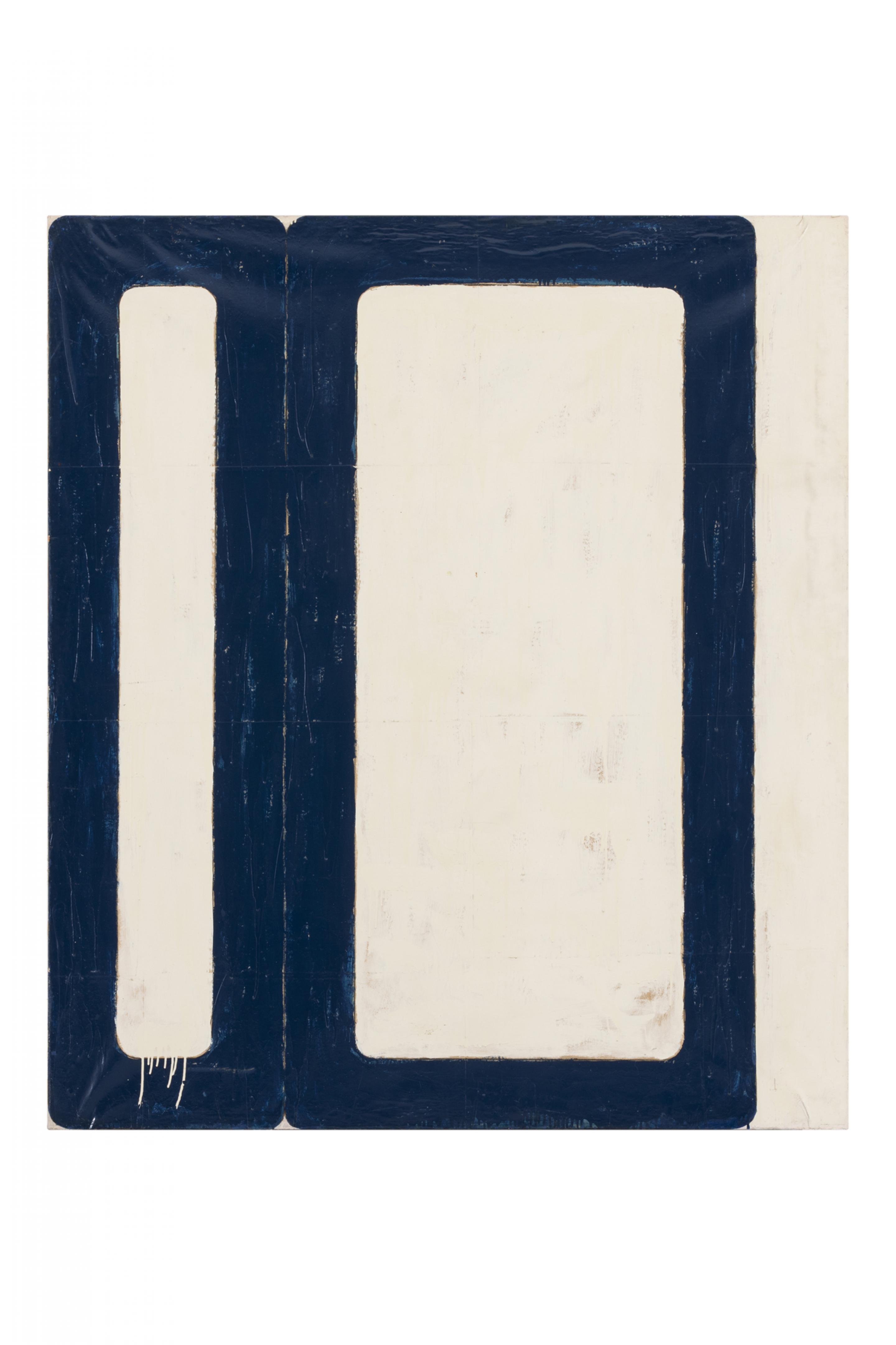MarioSCHIFANO
Schifano 1960-1964. Dal monocromo alla strada
02.2005–03.2005
Schifano 1960-1964. Dal monocromo alla strada
02.2005–03.2005
Press Release
Schifano 1960-1964
Dal monocromo alla strada
Opening: February 9, 2005
February 10 – March 26, 2005
Dal monocromo alla strada
Opening: February 9, 2005
February 10 – March 26, 2005
The Marconi Foundation is delighted to present the second exhibition held in its recently inaugurated premises, at 15 via Tadino.
The exhibition Schifano 1960-1964. Dal monocromo alla strada is among the activities of reassessment of important XXth century collections of works by artists such as Man Ray, Sonia Delaunay, Lucio Fontana, Gianni Colombo, Enrico Baj. Emilio Tadini, that the Foundation aims at carrying out together with public and private museums and institutions.
Giorgio Marconi first met Mario Schifano in Rome and in November 1965 he invited him to take part in the opening exhibition of Studio Marconi with Valerio Adami, Lucio Del Pezzo and Emilio Tadini.
From that time a close collaboration and a friendship began so that Schifano became one of the most representative artists of Studio Marconi.
Schifano was an unruly genius always challenging his own assumptions and beliefs.
His work belongs among the artistic currents tied to a new objectivity focusing on the image and impact of the city and the man-made environment in which the relationship with the world is mediated by the mass media (movies, signals, cartoons, advertising).
Ahead of many others, he undersood that the artist’s aim is a critical acceptance of the new instruments at his disposal that are set to become an emblem of pop art made in the USA, and he has to prevent them from becoming the ultimate “end” of his own artistic expression.
The exhibition will include 164 works from the early Sixties, and it will trace back the artist's itinerary from the "monochrome", a reaction to informalism, to the more "pop" urban landscapes.
"My monochromes are dripping painting - said Schifano - When I used (and when I use) industrial paint I wanted to give a symbolic meaning to painting. I didn’t want tonalities and so I chose blockcolour, tinned-colour."
Schifano's monochrome is a field of germination which was ready to produce something else.
The exhibition Schifano 1960-1964. Dal monocromo alla strada is among the activities of reassessment of important XXth century collections of works by artists such as Man Ray, Sonia Delaunay, Lucio Fontana, Gianni Colombo, Enrico Baj. Emilio Tadini, that the Foundation aims at carrying out together with public and private museums and institutions.
Giorgio Marconi first met Mario Schifano in Rome and in November 1965 he invited him to take part in the opening exhibition of Studio Marconi with Valerio Adami, Lucio Del Pezzo and Emilio Tadini.
From that time a close collaboration and a friendship began so that Schifano became one of the most representative artists of Studio Marconi.
Schifano was an unruly genius always challenging his own assumptions and beliefs.
His work belongs among the artistic currents tied to a new objectivity focusing on the image and impact of the city and the man-made environment in which the relationship with the world is mediated by the mass media (movies, signals, cartoons, advertising).
Ahead of many others, he undersood that the artist’s aim is a critical acceptance of the new instruments at his disposal that are set to become an emblem of pop art made in the USA, and he has to prevent them from becoming the ultimate “end” of his own artistic expression.
The exhibition will include 164 works from the early Sixties, and it will trace back the artist's itinerary from the "monochrome", a reaction to informalism, to the more "pop" urban landscapes.
"My monochromes are dripping painting - said Schifano - When I used (and when I use) industrial paint I wanted to give a symbolic meaning to painting. I didn’t want tonalities and so I chose blockcolour, tinned-colour."
Schifano's monochrome is a field of germination which was ready to produce something else.
The exhibition curated by Giorgio Marconi, director of the Marconi Foundation and expert of Mario Schifano's work, will include a hundred works coming from important private and pubblic collections, among which the GAM, Turin, the Civico Museo d'Arte Contemporanea, Milan, the CSAC - Parma University and the GNAM, Rome.
From the collection of Ileana Sonnabend, a famous gallerist from New York with whom Schifano worked at the beginning of his career, two important works will be on display: Cleopatra's Dream, 1960-61 and A De Chirico, 1962.
Works by Schifano from 1960 to 1964, unanimously considered among his masterpieces, have been made available from historic collections in Rome, Terni, Parma, Bologna, Modena, Padua, Como, Turin, Milan.
The exhibition will be accompanied by the volume Schifano 1960-1964. Dal monocromo alla strada of 208 pages published by Skira with 165 colour reproductions and a wide selection of critical texts by Achille Bonito Oliva, Maurizio Calvesi, Germano Celant, Maurizio Fagiolo dell'Arco, Filiberto Menna, Arturo Carlo Quintavalle, Pierre Restany, Pier Luigi Tazzi, Giorgio Verzotti.
The exhibition has been organized with the contribution of Risanamento S.p.A., a Gruppo Zunino's property company.
From the collection of Ileana Sonnabend, a famous gallerist from New York with whom Schifano worked at the beginning of his career, two important works will be on display: Cleopatra's Dream, 1960-61 and A De Chirico, 1962.
Works by Schifano from 1960 to 1964, unanimously considered among his masterpieces, have been made available from historic collections in Rome, Terni, Parma, Bologna, Modena, Padua, Como, Turin, Milan.
The exhibition will be accompanied by the volume Schifano 1960-1964. Dal monocromo alla strada of 208 pages published by Skira with 165 colour reproductions and a wide selection of critical texts by Achille Bonito Oliva, Maurizio Calvesi, Germano Celant, Maurizio Fagiolo dell'Arco, Filiberto Menna, Arturo Carlo Quintavalle, Pierre Restany, Pier Luigi Tazzi, Giorgio Verzotti.
The exhibition has been organized with the contribution of Risanamento S.p.A., a Gruppo Zunino's property company.







